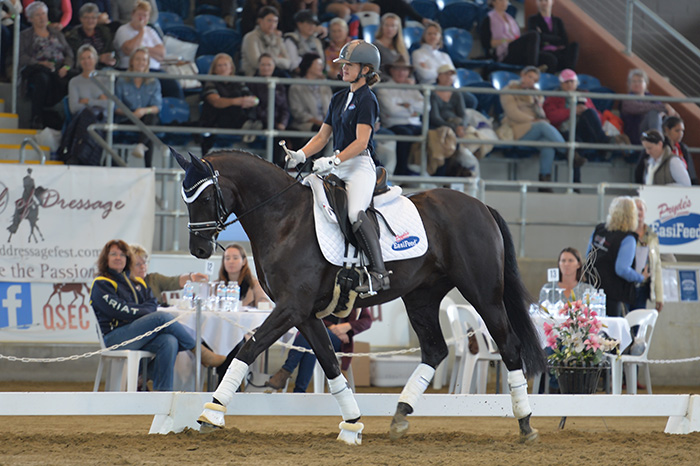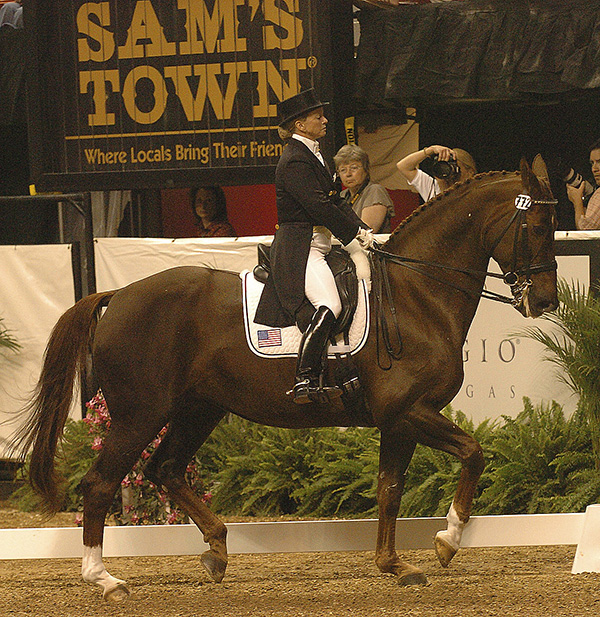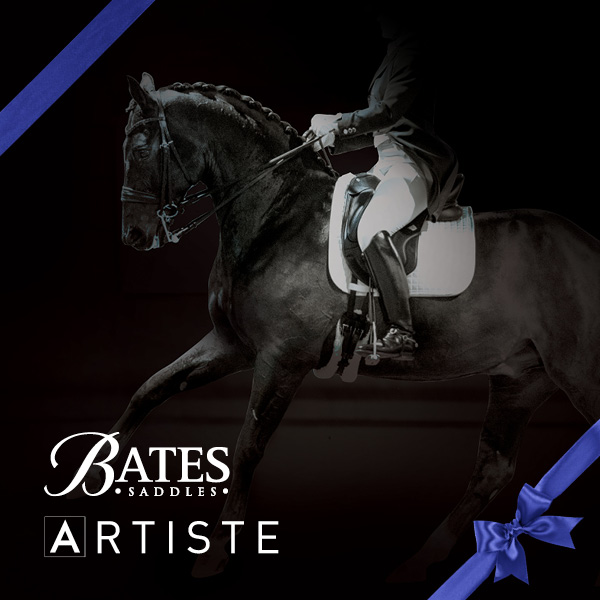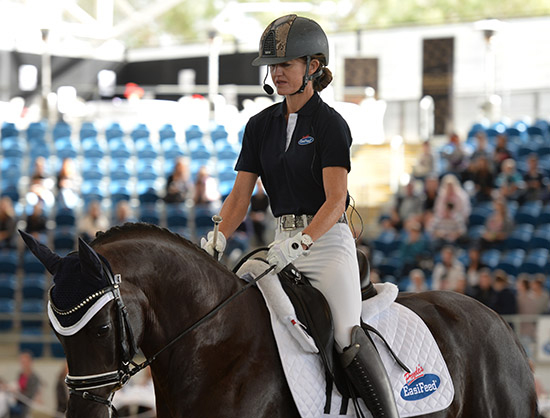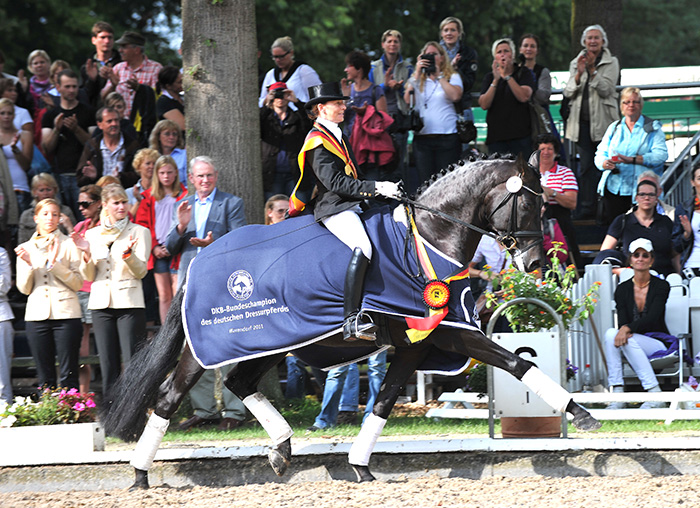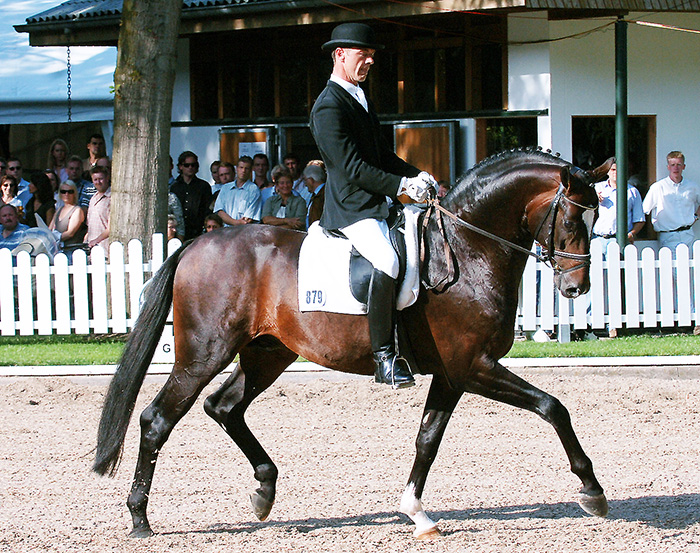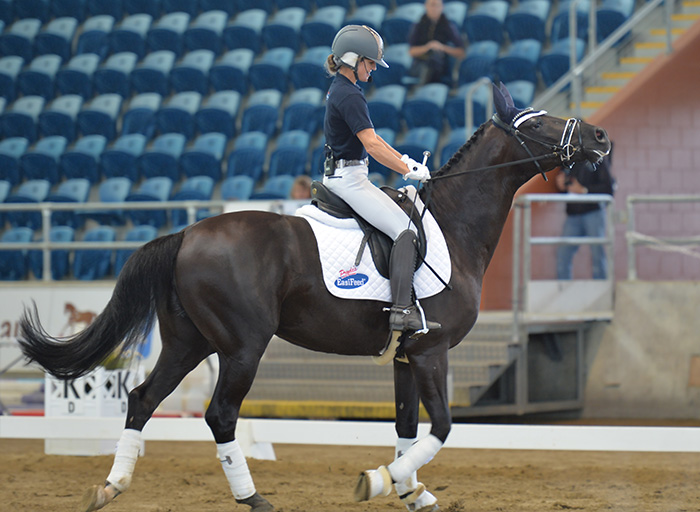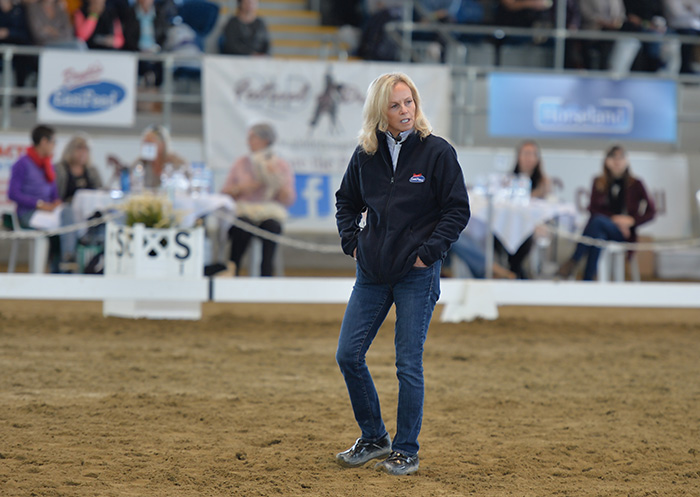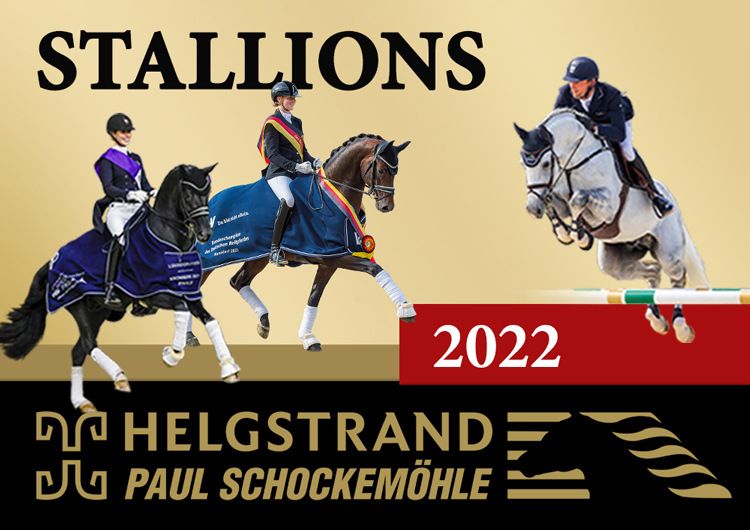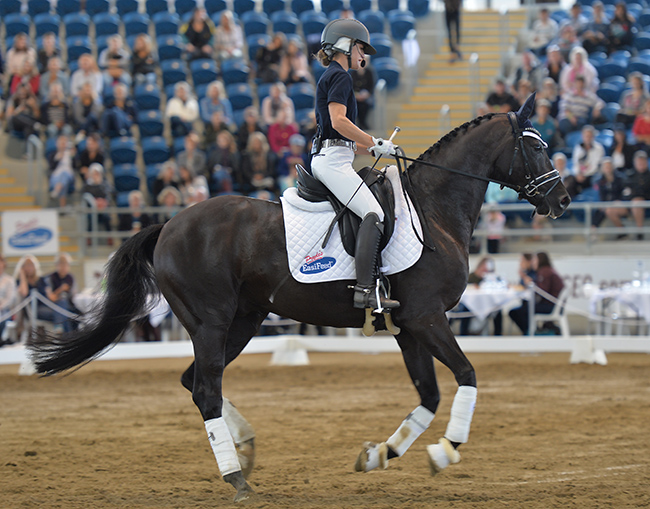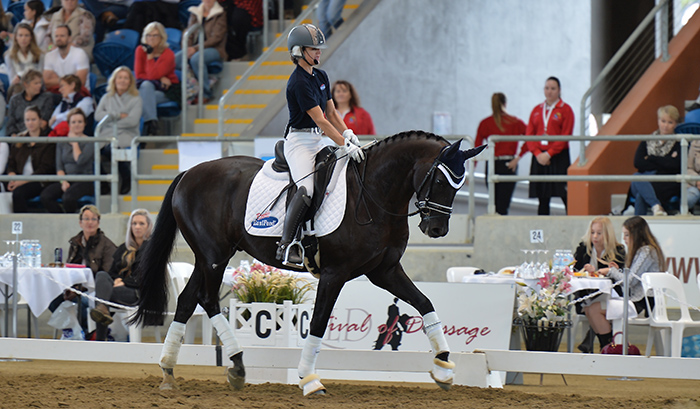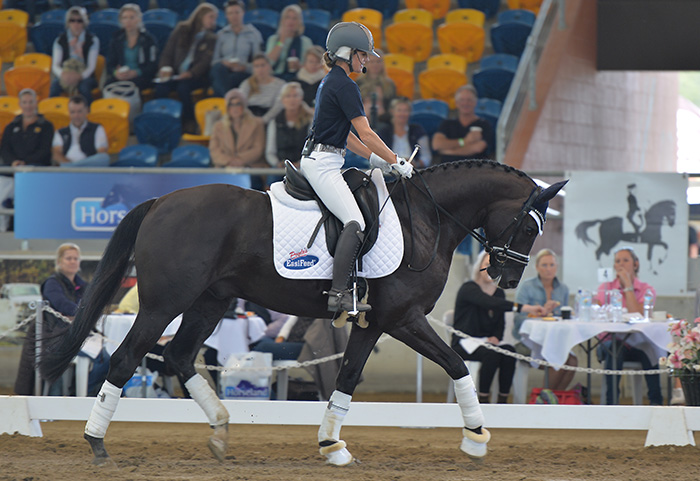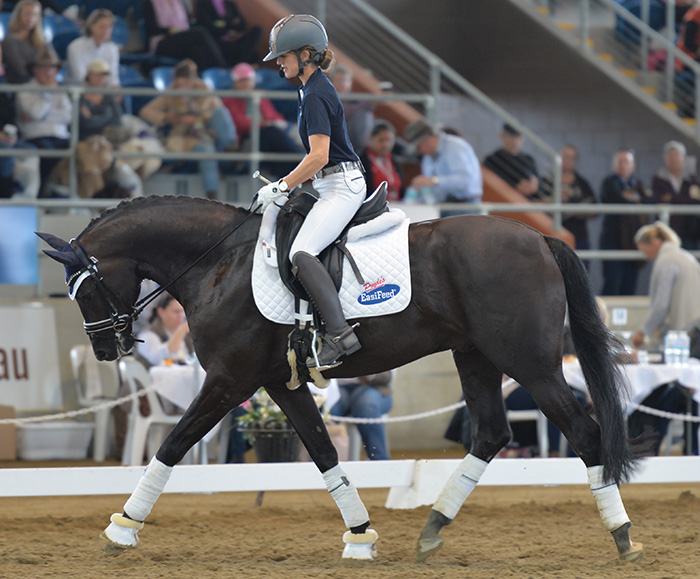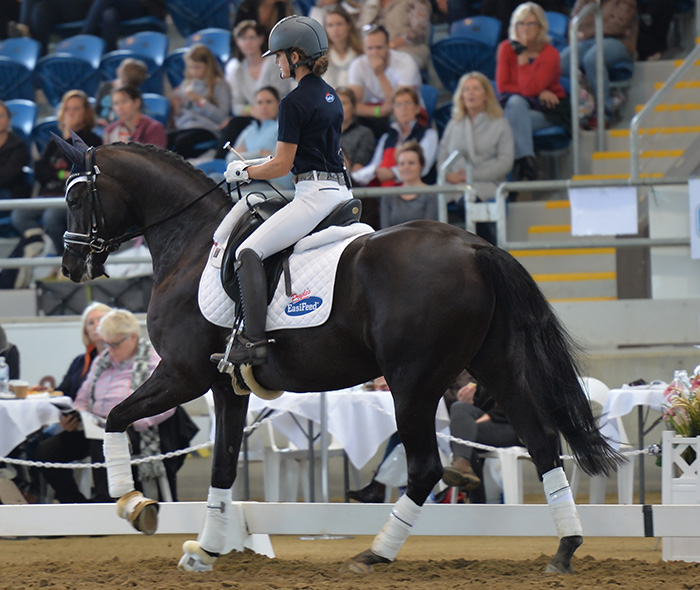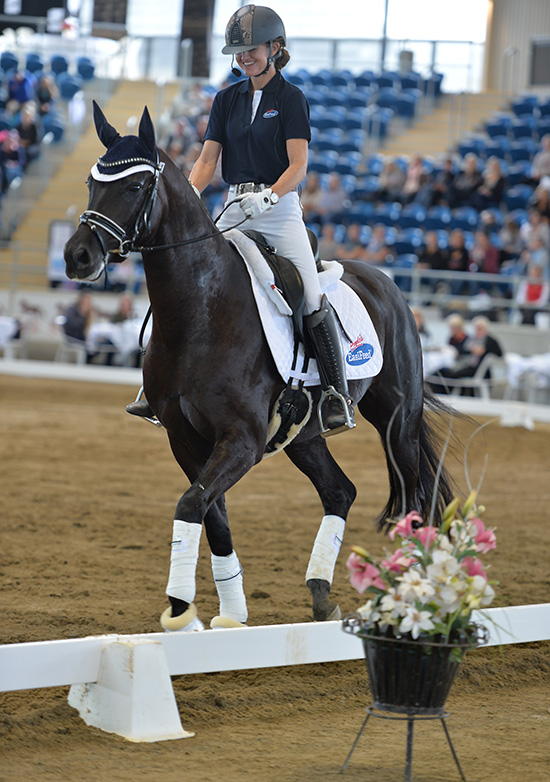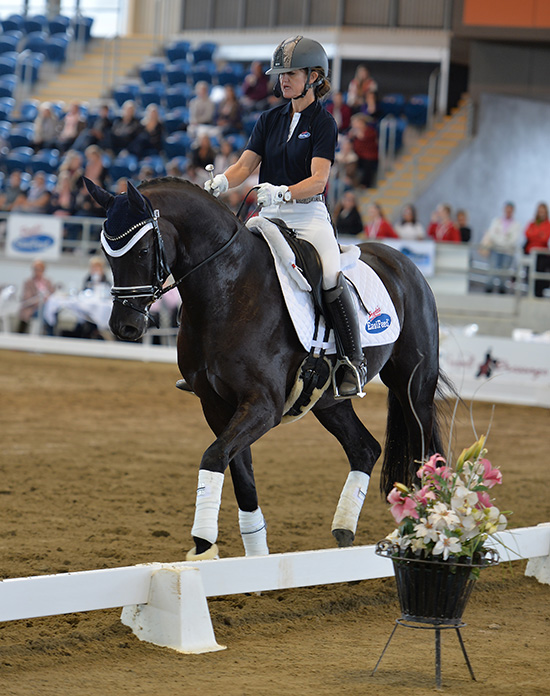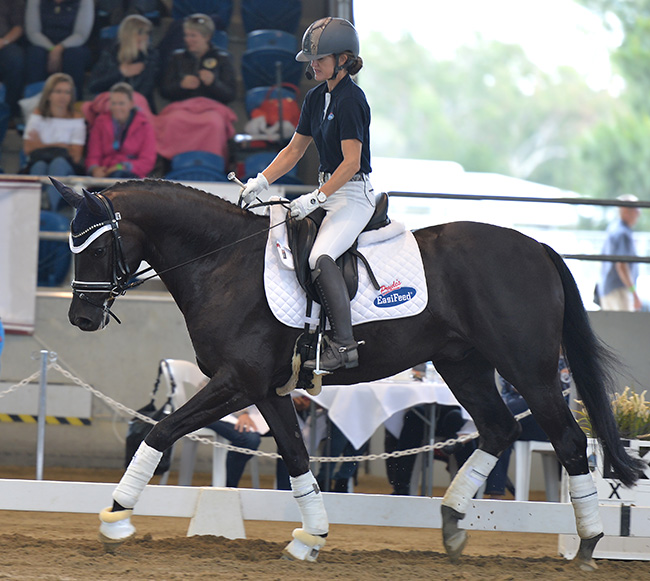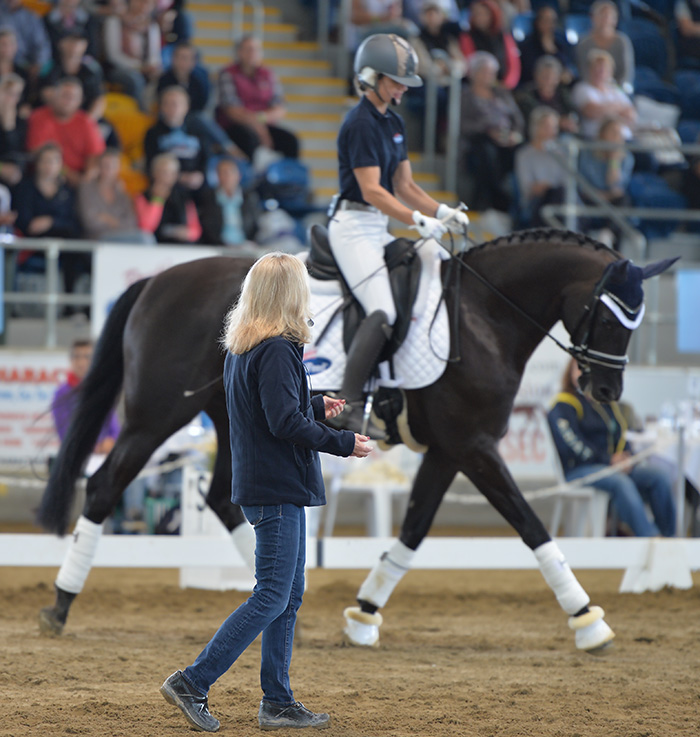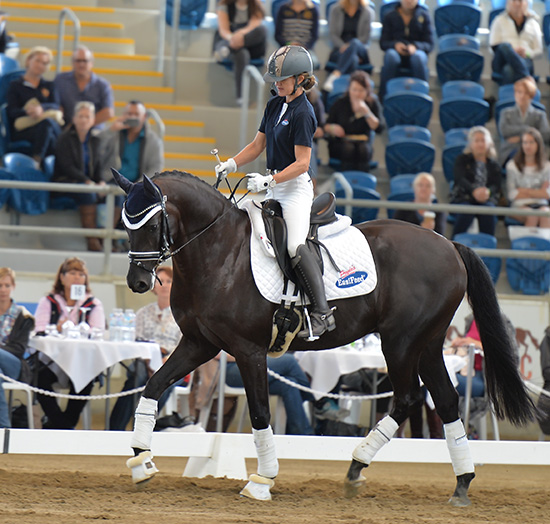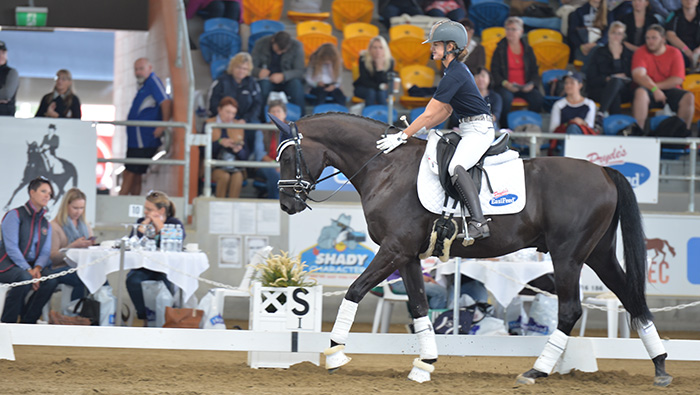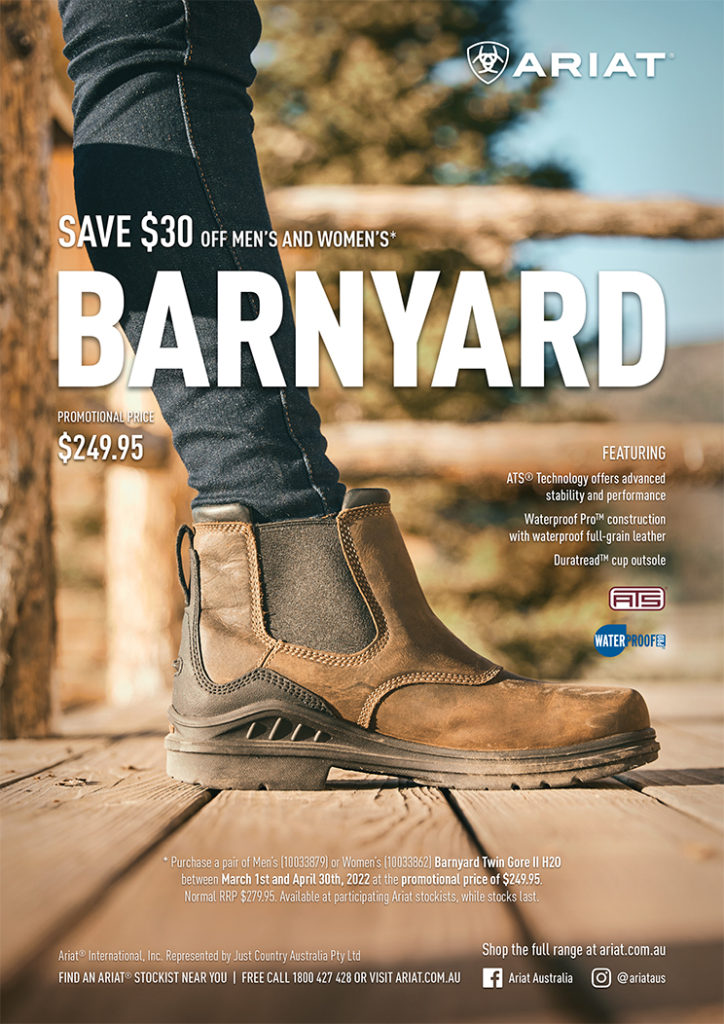It’s not just the Americans that have benefitted from Debbie McDonald’s wisdom. Here is a report from a clinic Debbie conducted in Queensland…
The first rider listed for Debbie McDonald’s master class was Nicole Tough was riding a new acquisition, the five-year-old Ferragamo. It was nice to hear that Nicole had included in her brief to the announcer, a tribute to one of her coaches, the late, great, Vince Corvi. Nicole was looking forward to the chance to work with one of the world’s best…
Debbie and Brentina at the World Cup in Las Vegas, in case you hadn’t guessed…
“I’ve not had an opportunity to work with Debbie before. I’ve watched a lot on You-tube and online. I loved her World Cup Freestyle ride on Brentina – I loved that.”
“For me, what is important, is she is a small rider. Most successful dressage riders are tall, and I’m five foot three…. and a little bit, and she’s smaller, and she achieved what she did riding that huge mare. I was thinking, if she can do it, then I’ve got no excuse. She’s obviously not using her muscles, or her strength because she is tiny. For me it was always, okay, if she can do it, I can do it.”
story continues below the advertisement
Now you have ridden in a couple of sessions with her to prepare for the master class, what’s the take home?
“She re-adjusted my sense of straightness – my perception of straightness easily goes astray, even though I have a lesson every week, my sense of straightness can be a worry…”
Are we talking horse straight or rider straight?
“Both, because when the horse is not quite traveling in alignment, then quite often the rider isn’t either. Or vice versa. That has definitely been something to take home. And also for me, sometimes she was saying, just relax, just soften – I wasn’t doing anything, but I still had tension. I still had tension in my body and my elbows, and she said, just soften and feel it. It was a beautiful feeling – part of that tension is the pressure and stress of riding in front of someone like Debbie – and it was great to let go and be involved in the moment, feeling the moment.”
“Despite the fact that Debbe is so small and probably not wanting a lot of muscle in her hand, she said, don’t have them too light. If they are too light, a mistake is close. For me it was about getting a bit more contact and having the horse a bit more secure in my hand. It made a very big difference to my young horse.”
More follows
Both Fürstenball and Sir Donnerhall are available from:
Fürstenball
Sir Donnerhall
Not surprisingly, the black gelding was a bit startled to find himself facing all those people.
Debbie was re-assuring: “The atmosphere is over-whelming for a young horse, so the most important things are rhythm and relaxation, there’s no hurry, take your time on a circle and think, I want swing and searching contact.”
Debbie also had a word of warning for riders intent of taking a young horse through the stages to FEI: “With young horses, unless you are experienced, seek professional help. With young horses, you train them at their own speed.”
Story continues below advertisement
And one of the first issues – control and its big brother, over-control, is already out there:
“That’s good Nicole, let him look a bit, try not to over-control the contact.”
But at the same time, don’t compromise at the other end – be careful not to take off the leg: “When you get on young horses they have lots of energy and they learn to teach us to keep our leg off them – use the circle to get him to accept your leg.”
“On the circle, the more he stretches, the more he is coming to the contact. The last thing you want to do is make him afraid of the contact. Use a little position – a slight baby leg yield in the downwards transitions, to get him into the contact. And DON’T over control – on young horses we always feel we are losing control, but we have to learn to trust the horse.”
“He is so forward thinking that you don’t need to drive, make a little circle, and leg yield on the open side. When he feels insecure, talk to him, don’t over-ride, don’t pull him down – go with him. When you pull on the inside rein with a young horse, they just keep running in the other direction. You don’t need hands so much, if you can train the horse to react to your upper thigh. Even if he wants to look, follow with your hands, talk, good job buddy, see there is no restriction.”
“Now change to the other side, which is harder for him, and when he wants to look up tell him not to worry, good boy. I have never worked with a horse that doesn’t respond to reward.”
Even in a slightly extreme situation, Debbie wanted Nicole to hang in there:
“If he comes way above and canters, don’t pull him down. Canter, a little outside rein, help him to understand there’s nothing to worry about. So important to keep him thinking forward even in those moments, his job is to get to the other end of the arena.”
“When he wants to look up tell him not to worry, good boy. I have never worked with a horse that doesn’t respond to reward.”
Up goes the gelding’s head, Nic goes to take a pull, thinks better of it, and gives…
“Good, you caught yourself there. I love it.”
“If he puts his head up, keep riding, don’t pull down, he’ll decide it’s not comfy up there…”
Dear me where have I heard that a couple of hundred times before? Debbie started out as a jumping rider, and I guess she encountered the Gospel according to George H. Morris a few times before she hit the dressage arena. Again:
“Forward walk, even if he puts his head up, keep going until he relaxes with his head low. Don’t dictate where he has to carry his head, us dressage riders are all control freaks…”
And another injunction – get out of the arena when you can, hit the trails.
“With young horses it can’t be all work / drill, I love to take them out on the trails. Make it fun, be creative, make a happy life for a happy horse.”
“I like the frame now, please don’t think you need it rounder, this is a young horse. Just go with him. He’ll come back. It is really hard not to want to yank the horse’s head, but it is so important not to ride from the front. Ride forward and open it up, let him relax and get more comfortable. And you relax – relax your upper body, the horses feel that tension.”
The horse was invited to go long and low, but: “some horses want to rip the reins, it has to be with politeness.”
With the horse back up and working Nicole was getting a little shoulder fore, go straight, shoulder fore… “It makes me want to smile, the horse is starting to understand, he wants to show off a little,” Debbie enthuses.
And you know all those ‘groan prix’ horses you see in Clinics that can stumble through a parody of the movements, even if they have lost their walk, shortened their trot to a shuffle, and added an extra beat to the canter, no way when it’s Debbie’s way:
“Teach the horses to do the movements without tension, when the horse gives the movement, reward. Never jeopardize the quality for the movement…”
“After you have done a little of that baby lateral work, ask for a lengthening, the horse should never lose sight of his job, and that is to get to the other end of the ring. Our job is to sit up and look pretty. Pet him and make him know he is super special, confirm to him that he is doing right.”
“You set the standards for what your horse will do later, when they are young. When they do get to Grand Prix, every time the horse comes into the ring and looks around, the more they internalize, and get distracted and anxious. If you don’t want that to happen, right from the start with your young horse, keep them with you, keep their brain with you.”
Nicole confesses: “I did want to grab and control, but when I did what you said, the idea went away.”
At that point, Debbie points out that the 45 minutes allocated is too much time for a young horse. “End now on a positive. I like it when we have little issues and can work through them.”

